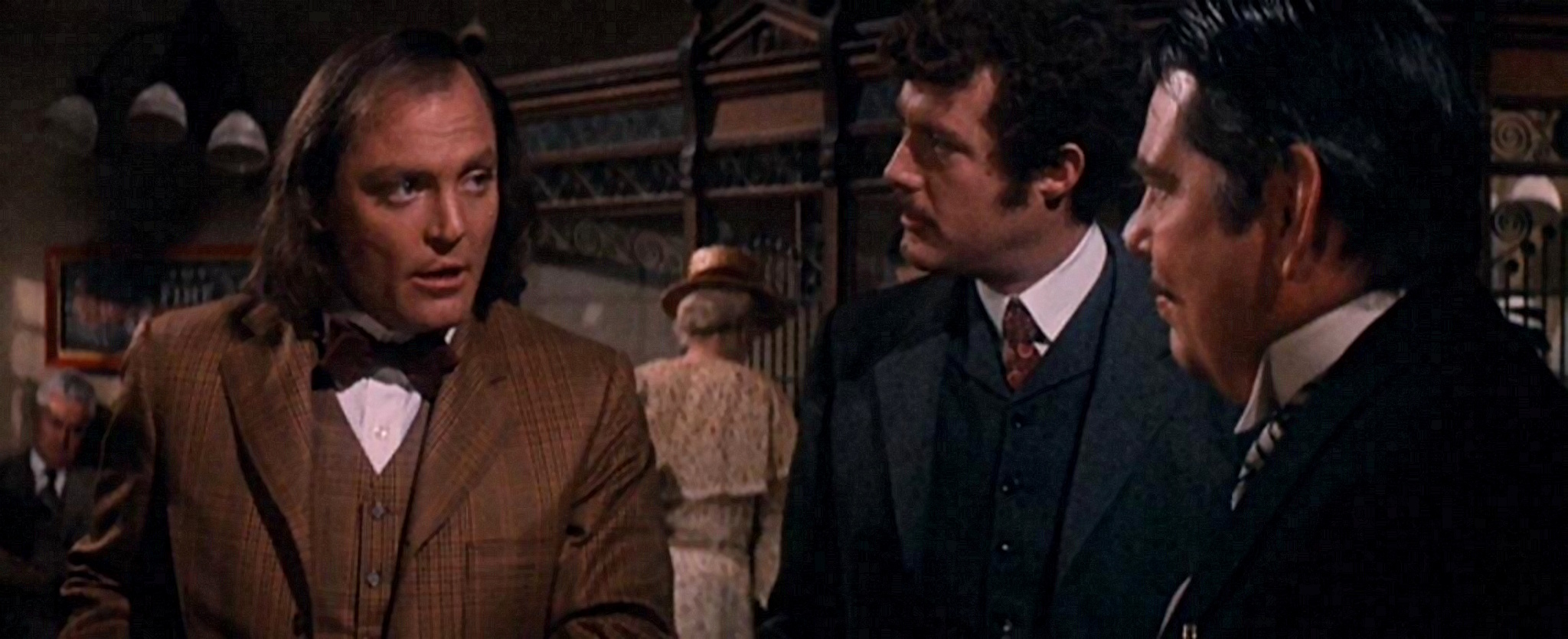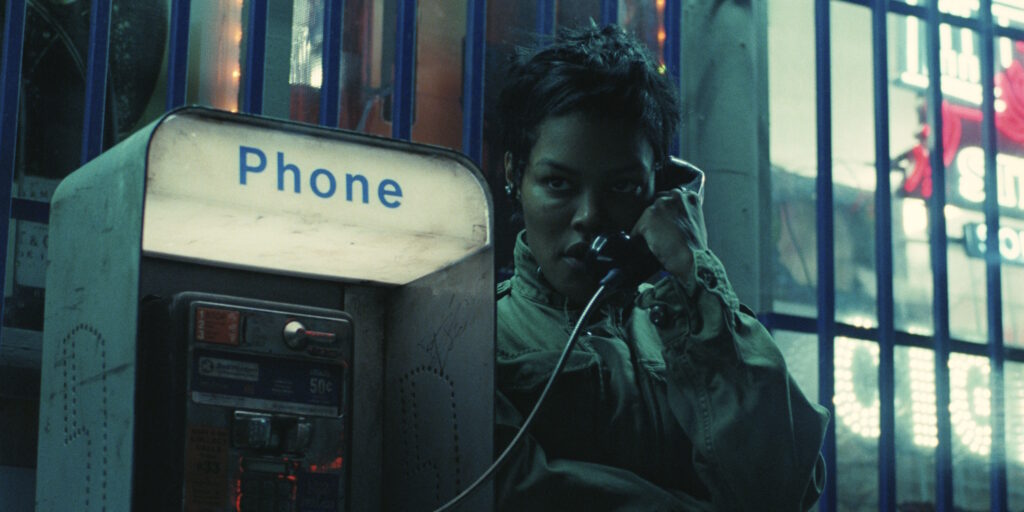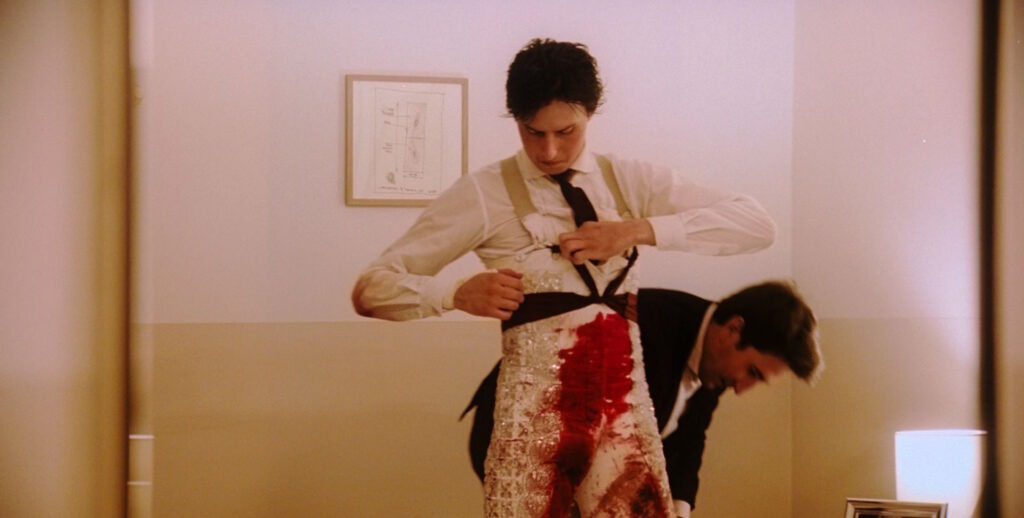[Note: This essay was originally published at Cinema St. Louis’ The Lens.]
Although The Traveling Executioner is celebrating its 50th anniversary this year, the events depicted in the film take place long before 1970 — about 50 years, to be exact. The film positions itself within the American South toward the tail end of World War I, with our lead, Jonas Candide (played by an up-and-coming Stacy Keach), taking his portable electric chair from prison to prison. He’s an ex-carny (and an ex-con), and he collects $100 for every death-row inmate he electrocutes. Yet, despite this morbid responsibility of his, Candide’s traveling-executioner routine feels more like a circus than an act of capital punishment because of the flair and flamboyance he brings to it. This showmanship is a huge part of his charm. To his detriment, that charm is also what seems to have gotten him into a serious bind in the first place.
When we first meet Jonas, he’s lurking on the sidelines of a dirty old prison while Gundred (Marianna Hill), a female inmate and half of a murderous pair of siblings he’s slated to execute, is taken to her cell by a grabby guard. Despite the very real threat she poses, Jonas is practically giddy at the chance to see her. He’s nearly skipping as he holds up his bribe to the guard — a bouquet of flowers with a crisp bill hidden between the blossoms — and enters her cell. Here, it’s love at first sight (at least for Jonas): The executioner has fallen for the executee, and he needs to do whatever he can to put a stop to her death (after all, he’s the one who’s going to be responsible for flipping the switch). It’s a setup straight out of a Coen Brothers movie.
From the little we’ve seen of Jonas up until this point, it only makes sense that each of these attempts to delay Gundred’s execution would go awry in some way or another. It’s why, oftentimes, Jonas feels like the hero and the villain of a silent comedy rolled into one person. He’s cartoonishly brash and pitifully sad all at once, both his own worst enemy and his biggest supporter. Apart from the warden or the guards, no real bosses or authority figures are barking in Jonas’s ear. There’s no one to tell him that he needs to quit fooling around and start taking things seriously. There is simply a race against time, a fight against the scheduled execution on the horizon, and the inner conflict he faces because of it. The stakes are low, to be sure, but it doesn’t make things any less entertaining.
On paper, The Traveling Executioner is just a rambunctious romp. It doesn’t have a very long running time, the supporting cast is pretty small and underdeveloped, and there’s not much of a plot to be found beyond this central thread, but it really doesn’t need any of these things — it’s an unassuming and absurdist slice of life, staying hyper-focused on Jonas’ plight and no one else’s. Beyond his futile struggle to free Gundred, much of the movie’s laughs can be found in the ridiculous hijinks that Jonas gets into with his bumbling assistant (played by Bud Cort, who some may recognize as Harold of Hal Ashby’s Harold and Maude from the year that followed The Traveling Executioner’s release). The two of them play off of each other like a backwoods Abbott & Costello or a perverse Laurel & Hardy, the stripped-down looseness of their comedic back-and-forth serving as a true testament to the way Jonas lives and breathes: paycheck to paycheck, execution to execution, up and down the dirt roads of Louisiana. His entire existence hinges on these cons and contract gigs, and because Gundred toes the line between the two, she effectively upends his life.
Given the film’s distinctly dark sense of humor, it’s surprising that there’s not more to be found about The Traveling Executioner out there. Because the film flopped on release and was hard to track down on home video until the early 2010s, substantial conversations surrounding the film are virtually nonexistent. Likewise, it’s just as confounding to see that director Jack Smight wasn’t really known for these kinds of films — his most notable directorial efforts are probably 1966’s Paul Newman vehicle Harper and 1976’s Midway, both far more action-packed and thrilling than this low-key, macabre comedy. Maybe that has something to do with The Traveling Executioner’s passing from sight. Of course, the production troubles that Smight faced while shooting and editing the film were also a curse and not a blessing. Whether it’s the passing of MGM head Herb Solo — Smight’s friend and biggest supporter — about midway through the film, the miscommunication that went on between cinematographer Phil Lathrop and the film developers at MGM, the drug-fueled bedlam going on in the personal lives of Keach and Cort, or the ongoing dispute in the editing bay between Smight and new MGM head James Aubrey, it’s plain to see that The Traveling Executioner was not a breezy production whatsoever.
All these factors should have bolstered its status as one of 1970’s greatest curios, not held it back from the cult status it deserves. Yet it’s this status as a sort of forgotten relic of the era that makes The Traveling Executioner worthy of examining in the end. It might sound trite, but they truly don’t make them like this anymore (at least on the studio level). It’s hard to imagine a time when a studio as big as MGM would willingly invest in something so disconnected from the more franchise-minded, intellectual-property-driven stuff we’re used to today. This kind of film has effectively been sent on its way to those fields of ambrosia Jonas talks so passionately about — instead of going up in a blaze of glory, these little studio gems suffered a painful, prolonged zap in the chair. Unless they’re resuscitated soon, they’ll surely be laid to rest.




